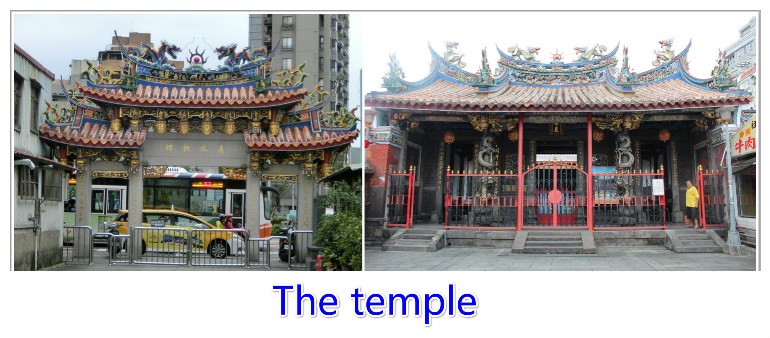

Mengjia Qingshui Temple was built between 1787 and 1790. Located at No.81, Kangding Road, Wanhua District, it is often known as the Tsushih Temple. Together with Mengjia Longshan Temple, Dalongdong Baoan Temple, they are the three main temples in Taipei. It was designated as a third-grade national monument in 1985.
In addition to Qingshui Master, the temple also honors other deities including Guanyu, Wenchang Wang (the god of culture and literature), Kui Xing (the god of examination), Mazu and others. Qingshui Master, some also called him Zushi Gong, or Dark-face master, was allegedly born in the Song dynasty in Yongchun, Fujian Provence. There are many theories about his real name, including Chen Chao, Chen Yin, Chen Chao-Yin. The legend says that he treated the sickness and prayed for rain to end draughts. In order to express their gratitude, local residents therefore built a shrine on Penglai Mountain, which was named Qingshui Temple. He therefore became the guarding spirit of Anxi area. Rumor has it that, before a natural disaster occurs, the nose of Qingshui Master would fall off to warn the people. Therefore, he is also known as the “nose-falling master.”
On the walls of Qingshui Temple is the earliest brick carvings, depicting the Old Man of the South Pole and Magu giving her birthday greetings. On the front door, a couplet reads: “Qingshui or Penglai, here is the divide; Golden body or iron face, here we will witness.” In the main hall, an inscribed board written by Guanxiu Emperor is hung, which attracts more worshippers for the temple. (Photos in below are taken by our team members.)
|

